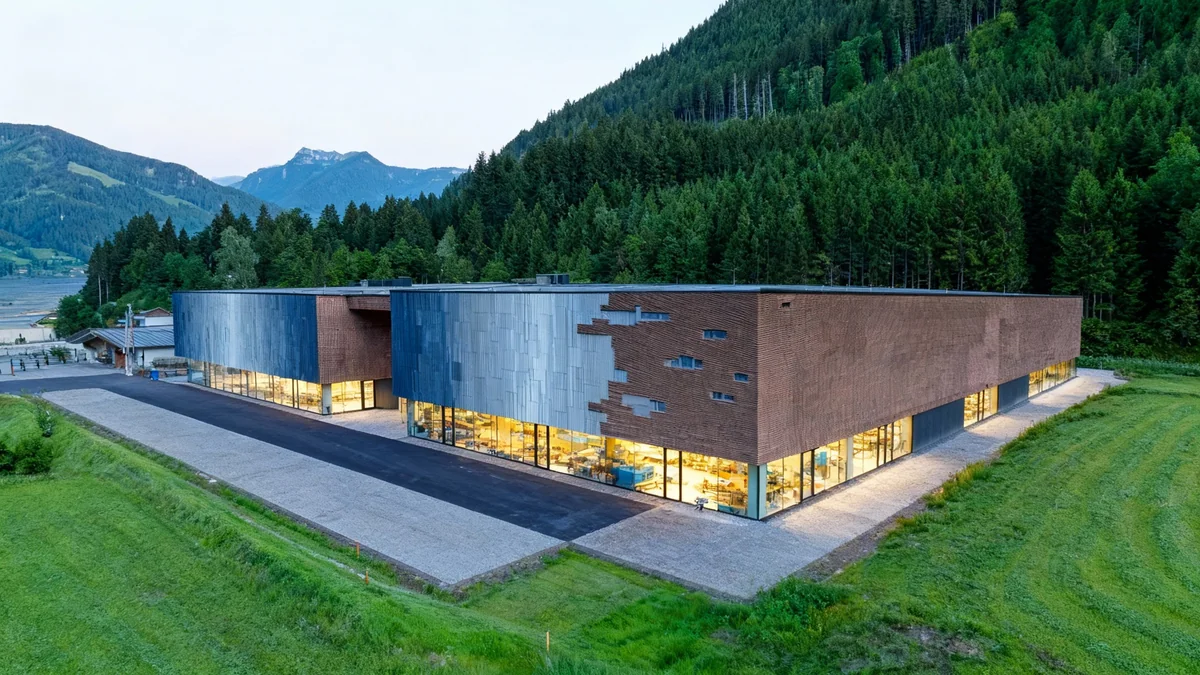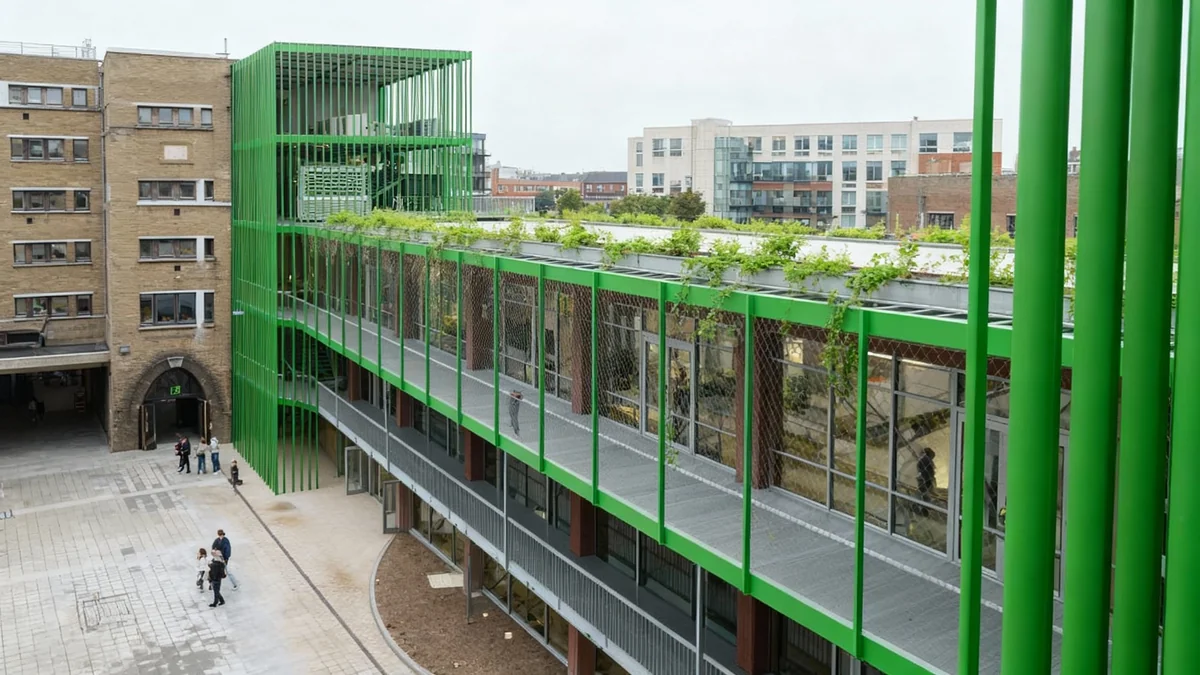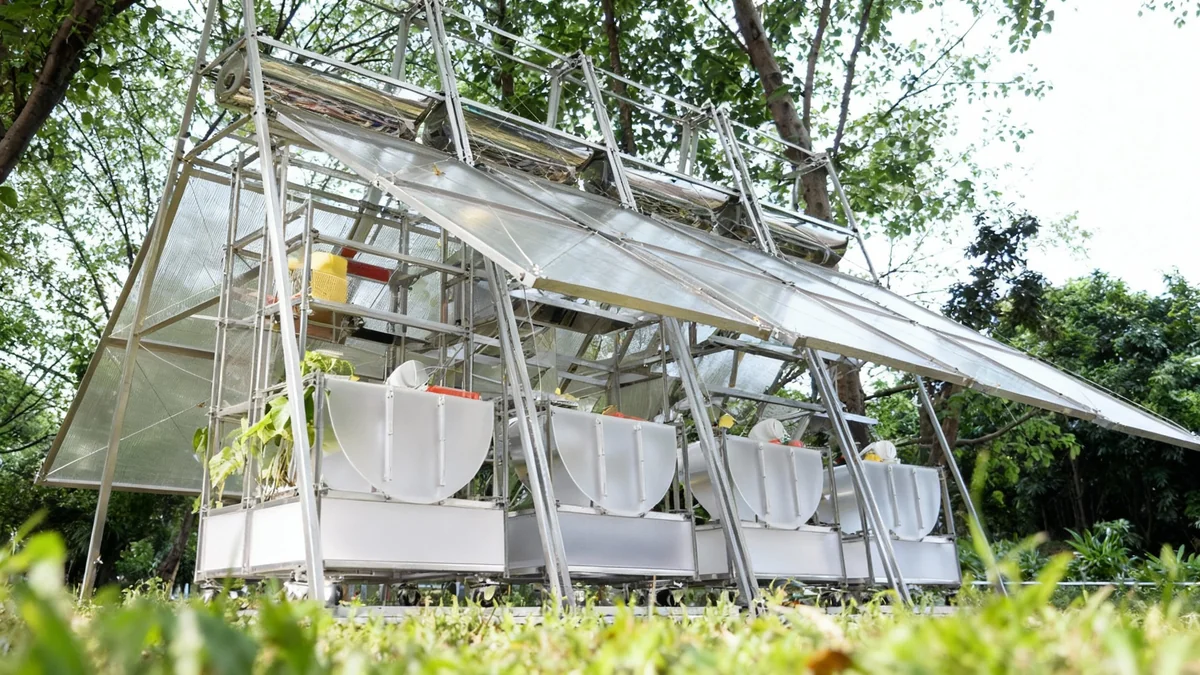Zaha Hadid Architects has revealed the Grand Canal Gateway Bridge, a striking, curving footbridge in Hangzhou, China. This new structure is set to open to the public later this year. It forms a central component of the broader Seamless City masterplan, which also includes residential areas, civic spaces, commercial districts, and a park, all designed by the same firm.
The bridge's design draws inspiration from Hangzhou's rich history in silk embroidery. It features three elegant white arches that visually weave over and under its main structure. This intricate design connects new urban districts, providing pathways for both pedestrians and cyclists.
Key Takeaways
- Grand Canal Gateway Bridge designed by Zaha Hadid Architects.
- Located in Hangzhou, China, part of the Seamless City masterplan.
- Design inspired by traditional silk embroidery techniques.
- Spans China's Grand Canal where it meets the Qiantang River.
- Features prefabricated modular elements for efficient construction.
Connecting Hangzhou's Historic Waterways
The Grand Canal Gateway Bridge spans China's Grand Canal, recognized as the world's oldest and longest man-made waterway. This significant location is where the canal converges with the Qiantang River. The Qiantang River is well-known in Hangzhou for its powerful tidal bore, often called the "Silver Dragon."
The bridge's design reinterprets traditional stitching techniques. This creates a sinuous structural system that weaves, overlaps, and binds. The firm stated that this design supports a bridge for pedestrians and cyclists. It connects the new residential, civic, and commercial areas of Hangzhou's Seamless City masterplan.
"Drawing on the city of Hangzhou's long-established heritage as a centre of excellence for China's renowned silk embroidery, the bridge's design reinterprets traditional stitching techniques," a representative from Zaha Hadid Architects explained. "Its sinuous structural system weaves, overlaps and binds to support a bridge for pedestrians and cyclists that connects the new residential, civic and commercial districts of Hangzhou's Seamless City masterplan."
Did You Know?
The Grand Canal is over 1,770 kilometers (1,100 miles) long and has a history spanning more than 2,500 years. It played a crucial role in China's historical economic and cultural development.
Innovative Design and Public Spaces
The bridge features two curved paths that form its walkway. These paths bend towards each other over a central concrete island. This island effectively divides the canal's north and south waterways. At the central point, the walkways curve perpendicularly. They extend in opposite directions into two distinct piers.
These piers are designed to offer multiple vantage points. Visitors can view the surrounding landscape and witness the impressive tall waves of the Qiantang River's tidal bore. This thoughtful inclusion enhances the public experience.
The Silver Dragon Bore
The Qiantang River tidal bore, known as the "Silver Dragon," is one of the world's largest. It can reach heights of several meters and is a major tourist attraction, particularly during the Mid-Autumn Festival.
The architects emphasized the balance between environmental considerations and civic aspirations. They noted that the bridge's walkways and plaza provide safe spaces for visitors. These spaces allow people to experience the natural power and spectacle of the Silver Dragon. This highlights a commitment to both aesthetic appeal and public engagement.
Efficient Construction and Future Outlook
Construction of the Grand Canal Gateway Bridge utilized prefabricated modular elements. This approach was chosen to significantly shorten the overall build time. It also aimed to minimize disruption to barge traffic on the Grand Canal. This method demonstrates a modern, efficient approach to large-scale infrastructure projects.
Zaha Hadid Architects has a history of designing impactful bridges globally. For example, they designed a vehicle and pedestrian bridge in Chengdu, China, featuring two symmetrical steel arches. Another notable project is the Danjiang Bridge in Taiwan. This bridge is expected to become the world's longest single-tower, cable-stayed bridge upon its completion next year. These projects showcase the firm's expertise in innovative bridge design.
The Grand Canal Gateway Bridge represents a significant addition to Hangzhou's urban landscape. It combines historical inspiration with modern architectural techniques. The bridge is poised to become a landmark, enhancing connectivity and offering unique public spaces for residents and visitors alike. Its opening is eagerly anticipated later this year.
- The bridge connects new residential, civic, and commercial districts.
- It provides dedicated paths for pedestrians and cyclists.
- Prefabricated modular elements were used to speed up construction.
- The design allows for multiple viewing points of the Qiantang River.
Architectural Impact and Urban Integration
The integration of the Grand Canal Gateway Bridge into the Seamless City masterplan is crucial. It ensures that the bridge is not just a standalone structure but a cohesive part of a larger urban vision. This holistic approach to design and planning is a hallmark of Zaha Hadid Architects' work.
The firm often focuses on creating flowing, organic forms that enhance the urban fabric. This bridge exemplifies that philosophy. It acts as a sculptural element within the cityscape, while also serving a vital functional purpose. Such projects often become catalysts for further urban development and revitalization.
The careful consideration of the bridge's environmental context, particularly its location at the confluence of two major waterways, demonstrates a commitment to sustainable and sensitive design. This ensures the bridge coexists harmoniously with its natural surroundings.
The bridge is expected to draw significant attention, both for its architectural merit and its role in improving urban connectivity. It stands as a testament to modern engineering and design capabilities, pushing the boundaries of what infrastructure can achieve.




